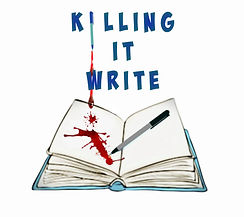Are You On Pace To Get Your Readers Over the Finish Line?
- Gina

- Aug 25, 2019
- 3 min read
Updated: Aug 27, 2025
How important is pacing? Probably more than you realize. Poor pacing can easily send your book to the donate pile. Or worse, the garbage pile!
In the various writing circles I frequent, I consistently see discussions abound on the subjects of story arc, outlining, character development, and plot development. All of these, in my opinion, are in the top five elements of creating a truly good story. What’s the fifth? You guessed it. Pacing.
Now, for the truly still-ripening newbie who might be overwhelmed by that list, don’t be. Because I have some insider information for you that will lessen that anxiety almost immediately, and it’s this: All five go hand in hand in some way.
For instance, structuring your story arc is basically the same as outlining, although true outlining is more detailed and broken down into smaller chunks, typically either scene by scene or chapter by chapter. And while structuring your story arc and/or your outline, you are at the same time developing your plot, and if you’re doing it correctly, developing your characters. Likewise, if you’ve thoroughly developed your story arc and/or outline (whether on paper or just in your head), you will, in all likelihood, have effectively checked pacing off your list of issues to watch out for as well.
Although not completely.
Sorry, but it isn’t quite that simple.
I say not completely because even after you’ve thoroughly done your homework concerning the other four elements listed above, you’ll still need to take the pulse of your line-by-line pacing if you don’t want to risk losing your reader. What do I mean by pulse? Well, I’ll tell you.
In basic terms, pacing is the speed at which your story moves; the time between moments of conflict and action. It’s how you make your story travel at its intended speed and avoid lags in story movement that allow your reader to become bored or tempt the reader to start skimming or skipping text to get to something happening.
Now, when focusing on your line-by-line pacing, think of this as your story’s heartbeat or, more specifically, the rhythm of your story’s heartbeat. (Or, if you’re one of those writers who likes to write with music playing in the background, think of the rhythm or beat of a song).
But regardless of how you look at it, pacing is the chain that holds your story together link by link, and those links are defined sentence by sentence, paragraph by paragraph, scene by scene and chapter by chapter. So yes, poor pacing can allow your story to fall apart!
Ask yourself how the particular scene you’re working on, or a section of the scene, should read. If it’s an action scene, an excited, fast-paced rhythm is key. If it’s tension-filled dialogue, perhaps not quite so excited, but still over the normal sedate rate. While character development sections, like a lovemaking scene, for example, should be slower paced, allowing the reader time to savor the moment.
Words matter when it comes to pacing, and the saying “Make every word count” is so true when it comes to pacing. Both word choice and sentence structure either speed up or slow your pace. And your pacing tempo is essential if you’re going to tap into a reader’s emotions. And if you aren’t tapping into those emotions, you haven’t gotten the reader fully involved, and if the reader isn’t fully involved, he or she isn’t hooked. And you know what that means. (See garage pile referenced above).
As with any subject about writing, I could go on and on, but I’ll save the rest for my writing workshops and individual coaching—for those of you who have questions and want to get deeper into the subject. For those writers who only partake in the blog posts, I’ll leave you with the above and my good wishes and say that I hope what I've given you here has helped.
Happy Writing!








Comments